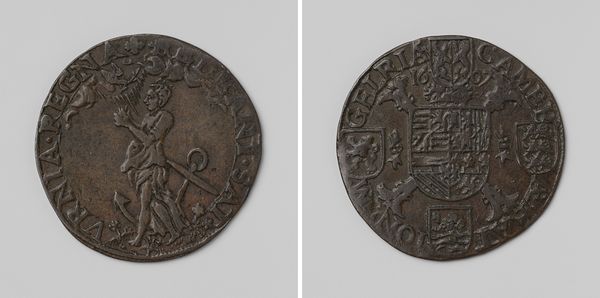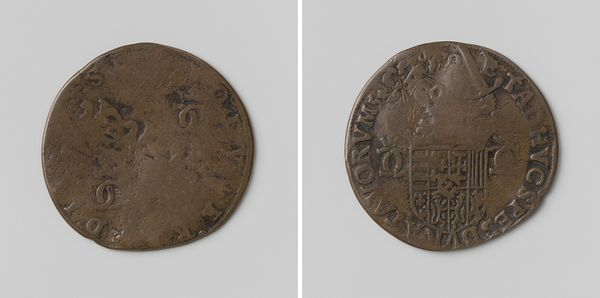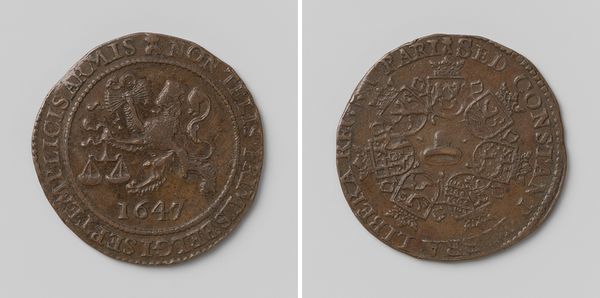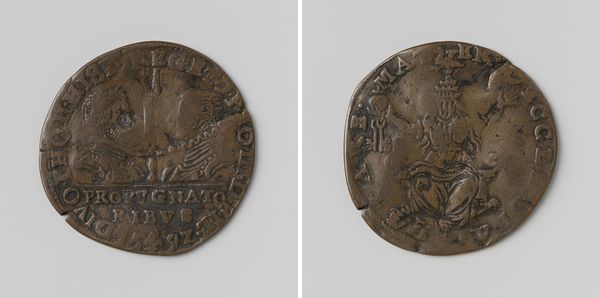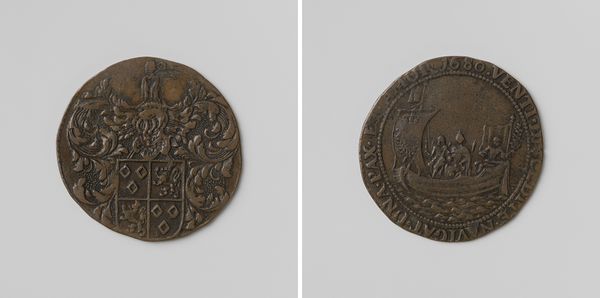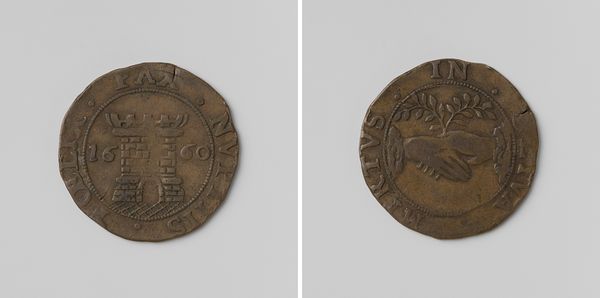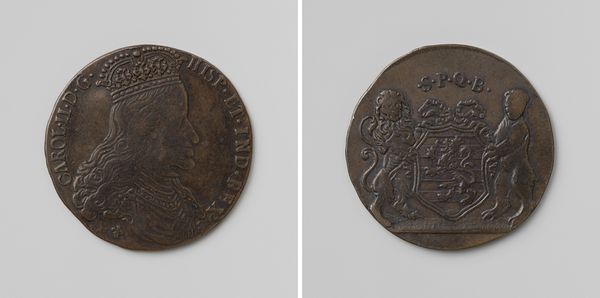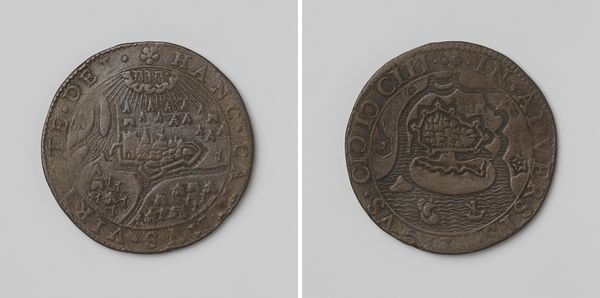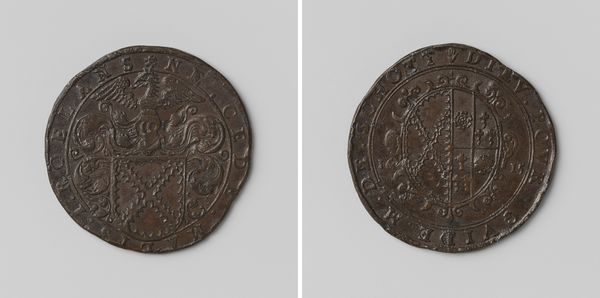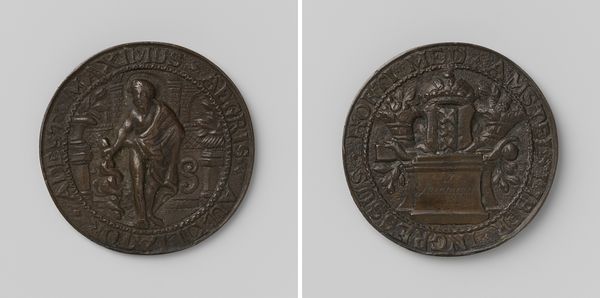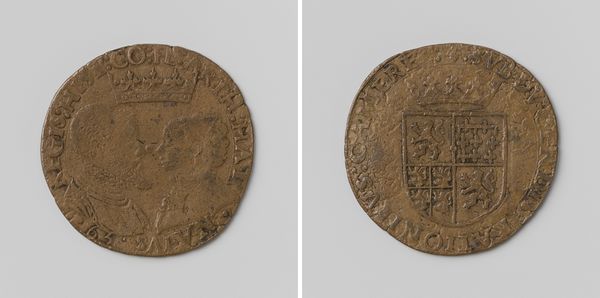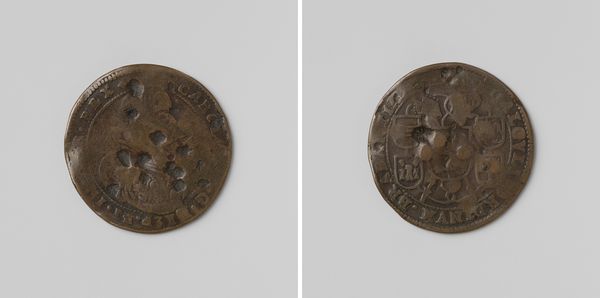
Hoop op vrede in Gelderland, rekenpenning van de rekenkamer van Gelderland 1607
0:00
0:00
anonymous
Rijksmuseum
metal, relief, sculpture
#
portrait
#
baroque
#
metal
#
relief
#
sculpture
#
history-painting
Dimensions: diameter 3 cm, weight 4.79 gr
Copyright: Rijks Museum: Open Domain
Editor: This is a metal "rekenpenning" or reckoning penny, titled "Hope for peace in Gelderland", made in 1607. It’s anonymous and housed in the Rijksmuseum. It’s a small, unassuming object, but the relief sculpture has a weighty, almost baroque feel. What stands out to you about this piece? Curator: I’m drawn to its materiality, its explicit function tied to calculation and control by the Chamber of Gelderland, but also its subtle narrative. The material itself, likely bronze or copper, speaks to the accessibility and intended circulation of this object. Coins were about use, circulation, production. The images of peace – the olive branch and cherubs – versus the instruments of war – the arms of Gelderland – is a visual tension reflecting its production during wartime. What kind of labor went into its production and eventual uses? How does it shape relationships of its user within society? Editor: That's fascinating. I hadn't considered the bronze or copper as suggestive of its intended circulation within specific social strata. Curator: Exactly. Consider the minting process itself. Craftsmanship, skill, and time investment transformed the raw materials. Look at the design and ask ourselves how these visual components are being mass produced and how these efforts speak to their time. What processes led to it and how did that production interact within contemporary culture? Editor: So, it’s not just an art object; it’s evidence of production and labor, communicating ideas about peace and power via very particular material means and a specific context. Curator: Precisely. The physical object becomes a lens through which we examine economic and social relations of the period. An understanding of these relations might explain why, during the conflict-ridden early 17th century, people may desire peace and express it in a useful tool for calculating public funds. Editor: This makes me look at this piece in a new light. Thank you! Curator: My pleasure.
Comments
No comments
Be the first to comment and join the conversation on the ultimate creative platform.
